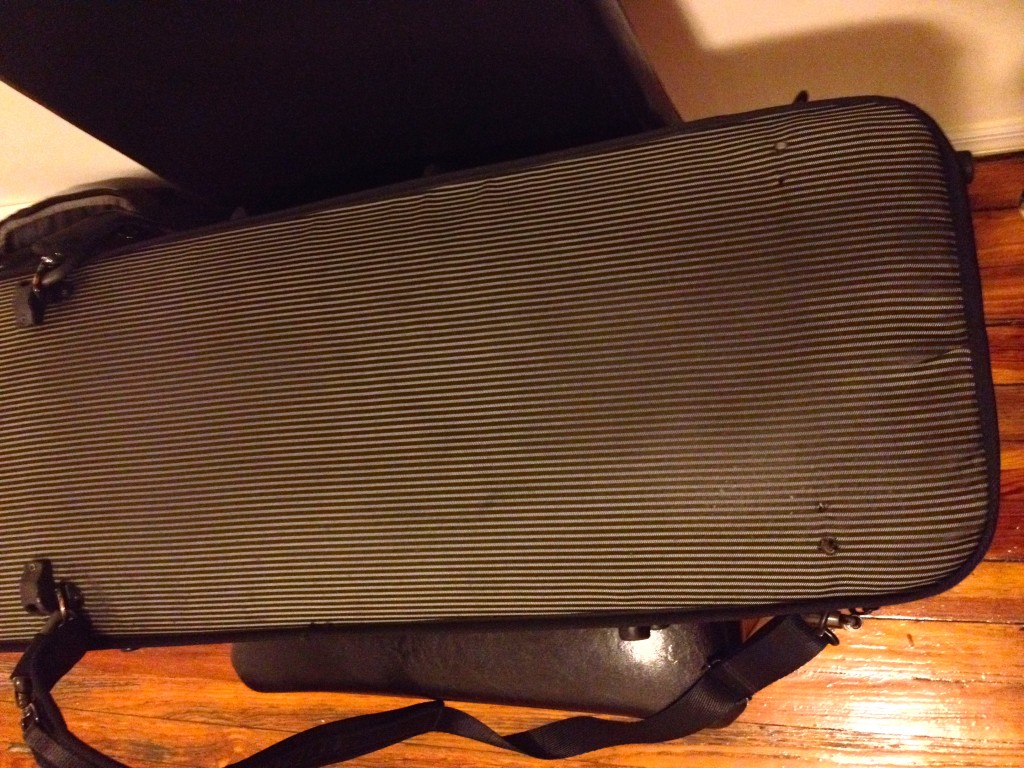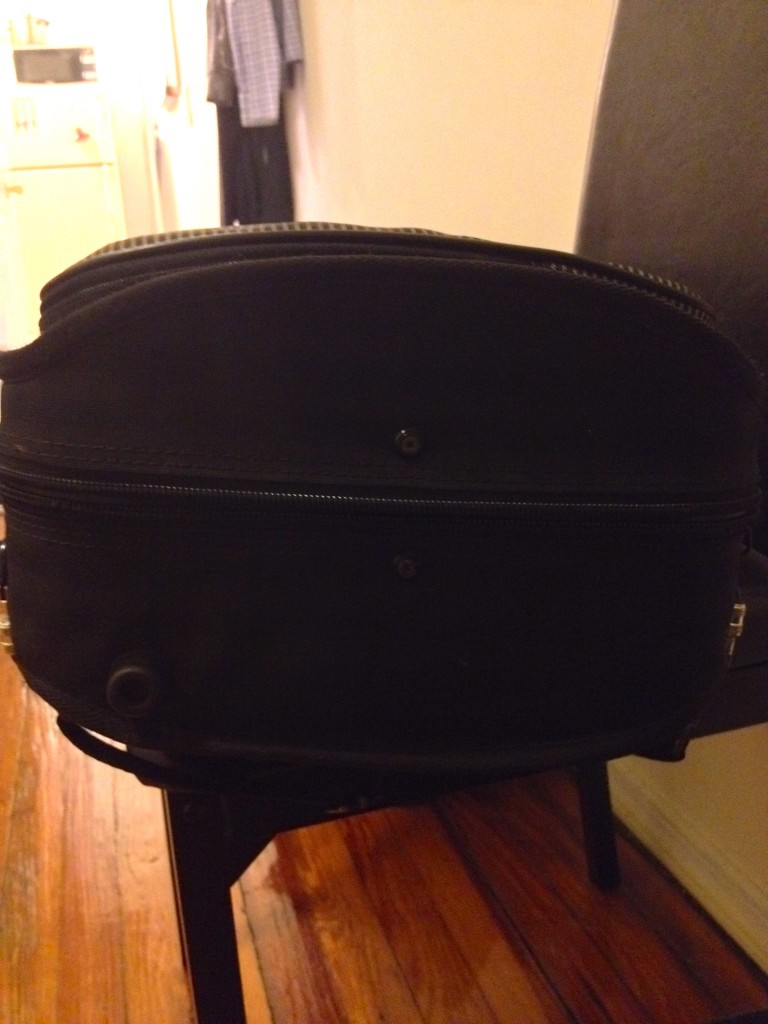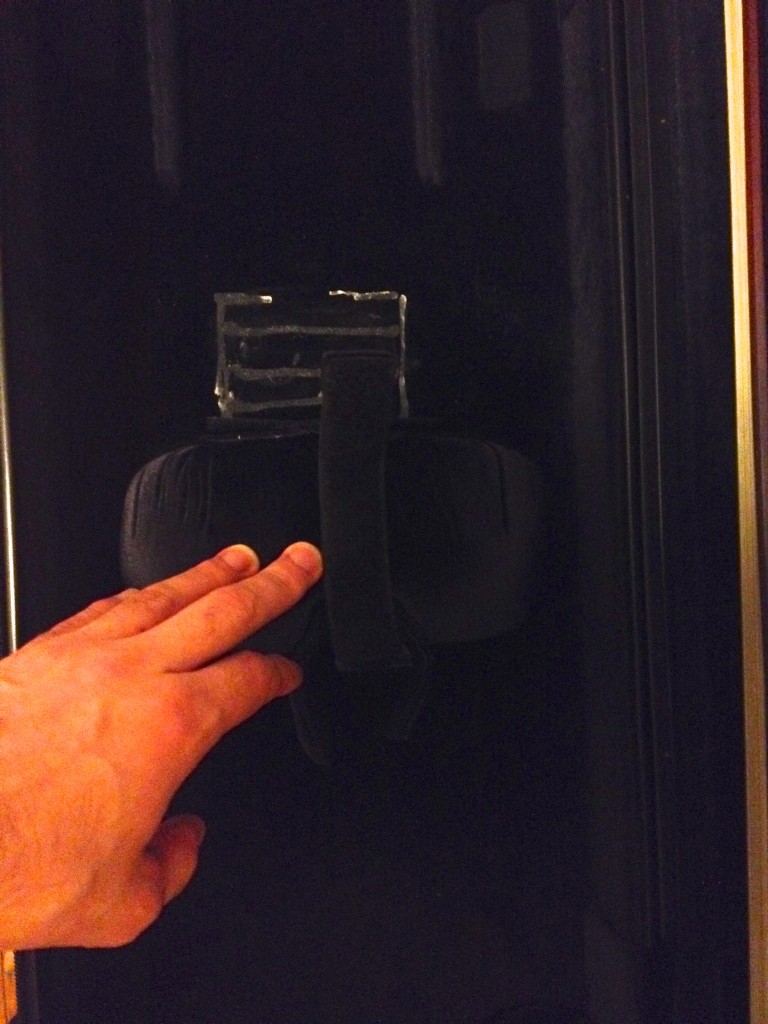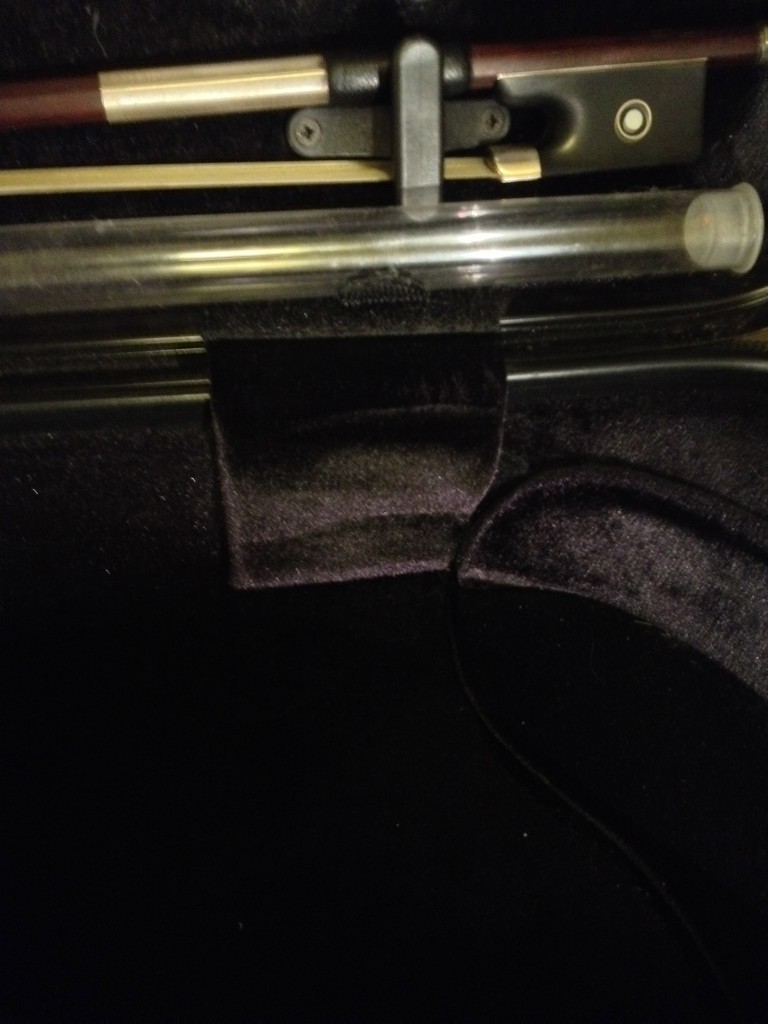About a year ago, I decided to ditch the case that I got along with my new instrument and get a nice shiny new BAM case. The previous two cases I had owned were these massive tanks of cases, made out of wood and kevlar, had poor straps and were as heavy as an M1 Abrams. When I first looked into the BAM Lotus cases there were a ton of features about it that I really liked.
I thought the kevlar coating would protect the exterior of the case from all the unsightly scarring of the fiberglass you see on many of the straight hard-shelled BAM cases.- It had a huge exterior pocket for sheet music.
- It had a smaller exterior pocket for easy access to a chromatic tuner, or some pencils
- On the interior, it had 4 slots for bows, plenty of room for my rather large Bon Musica shoulder rest, and a pencil case that could easily fit any other extra accessories I needed in my day to day playing.
What I didn’t know was that the case is pretty shoddily made and one of the ‘features’ of the case (which I didn’t mention above) scratched up the surface of my instrument.
When I first purchased this case, I lived in Miami and had a car, so the case didn’t get much wear and tear at all. It was either at home, in my car, or at University of Miami where I was getting an Artist Diploma. Most noticeably, the first thing to break down with this case, were the feet on the back of the instrument like the picture below.

As you can see on the right hand side, there are four holes in the back of the case. Here used to reside the “feet” for the back of case, which looked similar to the feet you can see on the far left of the image which the straps are attached too. When they initially fell off. I thought that perhaps, I had been a little careless about taking the case out of the car and putting it back in so that it tore at the feet in an awkward manner and caused them to be pulled out. This was not the case though, as you will see in a moment when I discuss the ‘Subway Standing Feet’.

Here on the bottom left you can see my last remaining subway foot, which I kind of wish would just fall off at this point since I can’t balance it standing up while on the subway anymore. It’s hard to see, but there are three other screw holes in the canvas of the case where the other subway feet used to be and have since fallen off.
Now, back to my thinking that the case was just getting abnormal wear and tear from my carelessness or freak bad luck. The case was still under warranty at the end of my Artist Diploma, so when I moved back to New York City, I took my case out to the BAM warehouse in Jersey. At that point I had lost only one of the feet on the back of the case, and two of the feet for the ‘subway stand’. The customer service was great, they took it in and fixed that same afternoon, so there is no knock on them for that. But after it was fixed up, all of these same things started falling off again from standard use. I was not tossing my case around (the thought of doing so with my precious viola inside sends a shiver down my spine), or exposing it to terrible elements. Because of this, I think that the anchors for all of the feet were just really weak. Ultimately, it’s not a huge deal, because the integrity of the case is still good, but it’s annoying to have the feet not protecting the shell of the case on these two sides.
These weren’t the only parts that degraded over time though. On the inside of the case, the mechanism for changing the size of the harness for the instrument is velcro. Looking below, I am lifting up the harness to display the degradation of the case, but you can see that the harness is velcro’d to to a strip that is supposed to be super-glued to the bottom of the shell. You pick up the harness and move it around, sticking it back to the velcro strip on the bottom to make room for larger or smaller bodied instruments. All in all, a pretty cool mechanism, until the strip on the bottom falls off and there’s nothing holding the instrument in the harness anymore. Now, I wasn’t tearing at the velcro with the harness, I wasn’t moving it at all as I only keep this one instrument in the case. In fact, all that happened was I opened up my case to find the velcro strip on the bottom of the case had fallen off one day and no longer wanted to cooperate in keeping my viola safe. I have tried repairing this myself to varying degrees of success. The ultimate solution would be some sort of stitching rather than various adhesives.

These issues are ones that are extremely annoying, but they can be coped with. One final thing about the design of the case cannot though. When I first bought the case it came with a tube for holding fresh sets of strings. It also used a velcro system of attachment, but was connected around the hinges of the case as you can see below.

As you can see the ‘scratchy’ part of the velcro is attached to the string holder. So when you close the case, it can actually scratch up against the front of the body of the instrument!!!!!!! I had no idea how my instrument was getting dinged up at first (I don’t hold my extra strings in these tubes), but once I found out I immediately took the tube out. Thankfully, my maker operates out of New York City and was able to get my instrument touched up.
These are some serious design flaws from what most people consider to be the case makers who “Get It”, and I think that I’ll probably be letting other musicians test drive new BAM designed cases before buying another one.